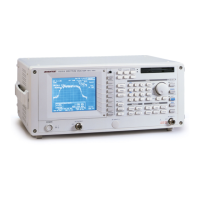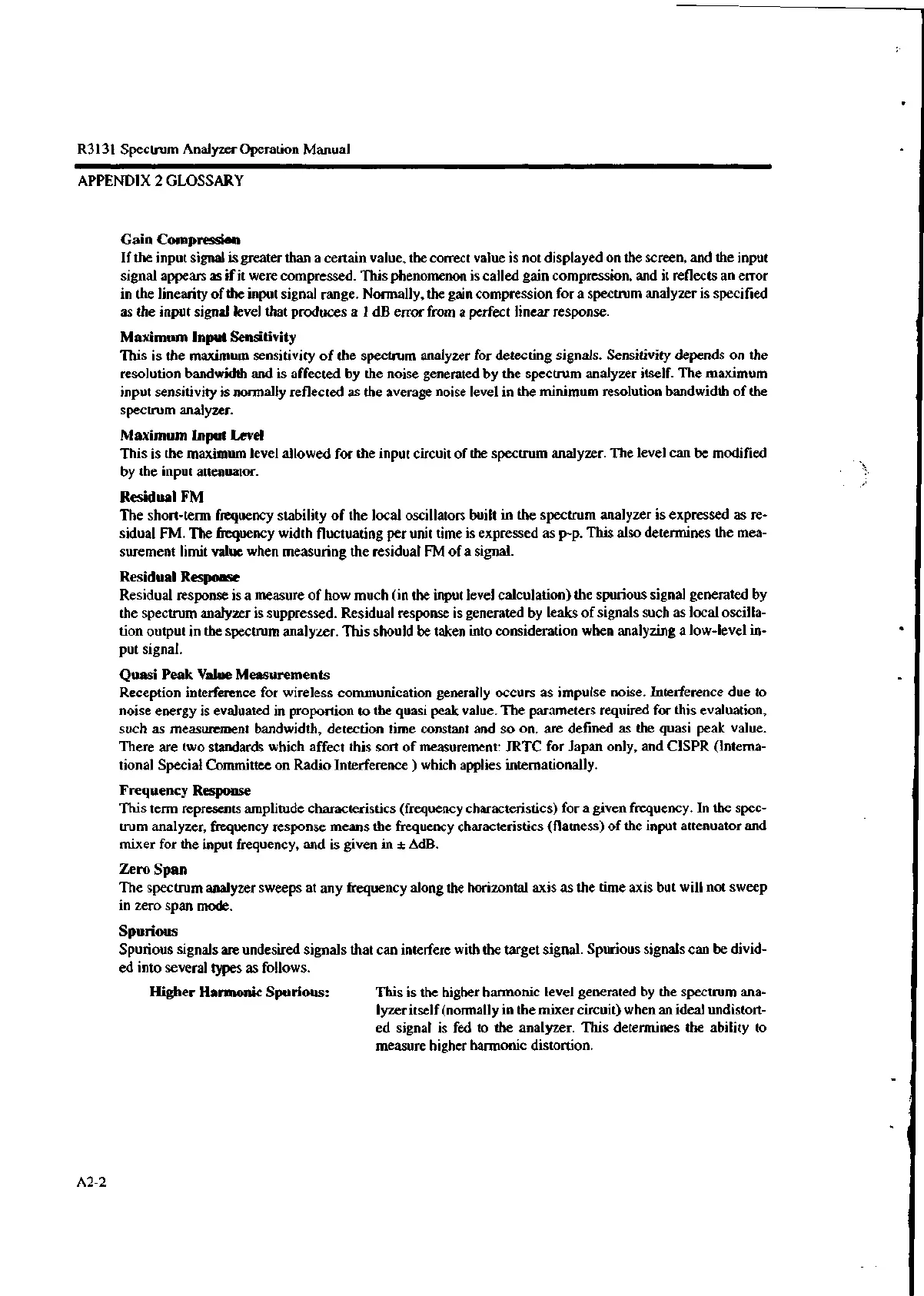R3131 Spectrum Analyzer Operation Manual
APPENDIX 2 GLOSSARY
Gain Compression
If the input signal is greater than a certain value, the correct value is not displayed on the screen, and the input
signal appears as if it were compressed. This phenomenon is called gain compression, and it reflects an error
in the linearity of the input signal range. Normally, the gain compression for a spectrum analyzer is specified
as the input signal level that produces a 1 dB error from a perfect linear response.
Maximum Input Sensitivity
This is the maximum sensitivity of the spectrum analyzer for detecting signals. Sensitivity depends on the
resolution bandwidth and is affected by the noise generated by the spectrum analyzer itself. The maximum
input sensitivity is normally reflected as the average noise level in the minimum resolution bandwidth of the
spectrum analyzer_
Maximum Input Level
This is the maximum level allowed for the input circuit of the spectrum analyzer. The level can be modified
by the input attenuator.
Residual FM
The short-term frequency stability of the local oscillators built in the spectrum analyzer is expressed as re-
sidual FM. The frequency width fluctuating per unit time is expressed as p-p. This also determines the mea-
surement limit value when measuring the residual FM of a signal.
Residual Response
Residual response is a measure of how much (in the input level calculation) the spurious signal generated by
the spectrum analyzer is suppressed. Residual response is generated by leaks of signals such as local oscilla-
tion output in the spectrum analyzer. This should be taken into consideration when analyzing a low-level in-
put signal.
Quasi Peak Value Measurements
Reception interference for wireless communication generally occurs as impulse noise. Interference due to
noise energy is evaluated in proportion to the quasi peak value. The parameters required for this evaluation,
such as measurement bandwidth, detection time constant and so on, are defined as the quasi peak value.
There are two standards which affect this sort of measurement: JRTC for Japan only, and CISPR (Interna-
tional Special Committee on Radio Interference ) which applies internationally.
Frequency Response
This term represents amplitude characteristics (frequency characteristics) for a given frequency. In the spec-
trum analyzer, frequency response means the frequency characteristics (flatness) of the input attenuator and
mixer for the input frequency, and is given in ± MB.
Zero Span
The spectrum analyzer sweeps at any frequency along the horizontal axis as the time axis but will not sweep
in zero span mode.
Spurious
Spurious signals are undesired signals that can interfere with the target signal. Spurious signals can be divid-
ed into several types as follows.
Higher Harmonic Spurious:
A2-2
This is the higher harmonic level generated by the spectrum ana-
lyzer itself (normally in the mixer circuit) when an ideal undistort-
ed signal is fed to the analyzer. This determines the ability to
measure higher harmonic distortion.

